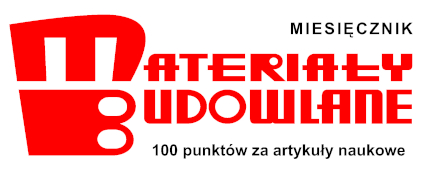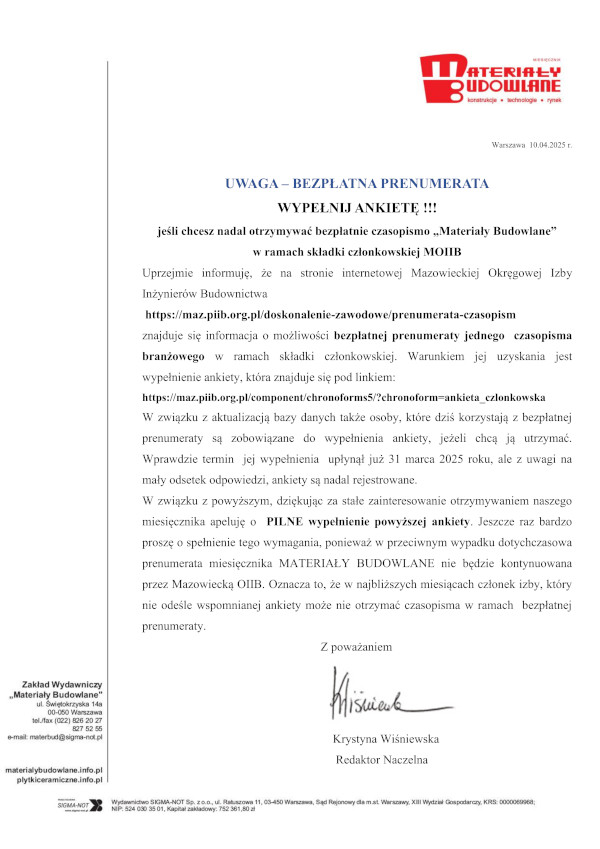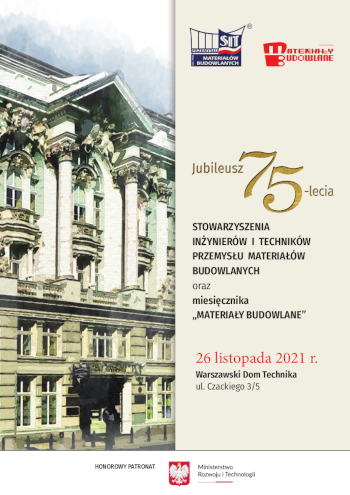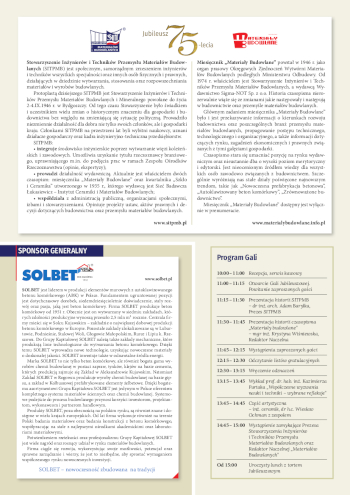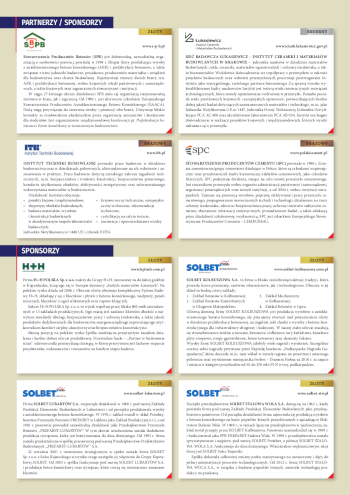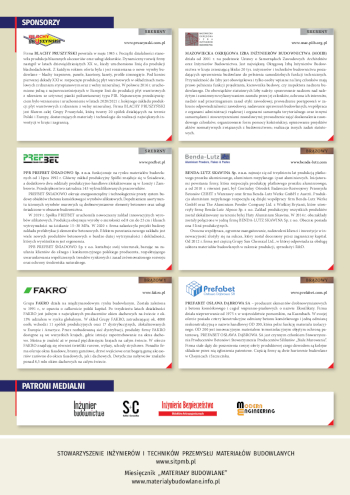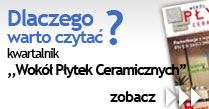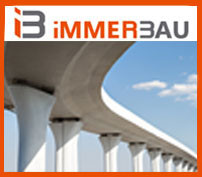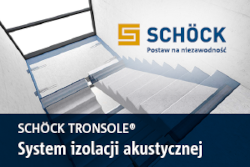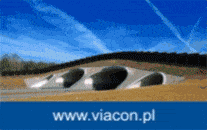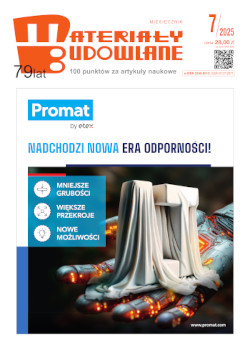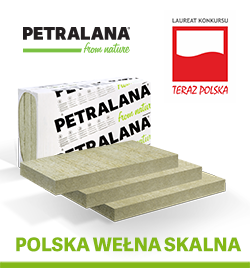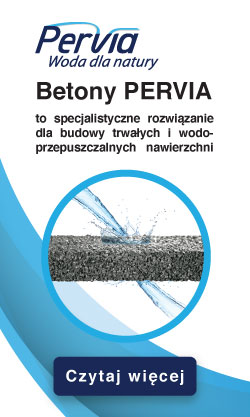Naprężenia własne w walcowanych dwuteownikach stalowych po formowaniu na zimno względem silnej osi bezwładności
Open Access (Artykuł w pliku PDF)
citation/cytuj: Marcinczak K. Residual stresses in steel I‑sections after cold forming about strong axis. Materiały Budowlane. 2025. Volume 633. Issue 05. Pages 32-39. DOI: 10.15199/33.2025.05.05
dr inż. Krzysztof Marcinczak, Politechnika Wrocławska, Wydział Budownictwa Lądowego i Wodnego
ORCID: 0000-0002-8789-5243
Correspondence address: Ten adres pocztowy jest chroniony przed spamowaniem. Aby go zobaczyć, konieczne jest włączenie w przeglądarce obsługi JavaScript.
DOI: 10.15199/33.2025.05.05
Original scientific article / Oryginalny artykuł naukowy
Abstract. This article presents the issue of self stresses and the methods for determining them. Describes the methodology of using the hole drilling method to determine the residual stresses occurring in cold bended I beams to the strong axis. The results of a study of the residual stresses in a steel I beam made of S460M steel are presented. The resulting stress distributions are compared with theoretical models.
Keywords: residual stresses, hole.drilling method, semi.destructive tests, cold bending.
Streszczenie. W artykule omówiono zagadnienie naprężeń własnych oraz metody ich określania. Opisano metodę wykorzystania metody otworkowej do określenia naprężeń własnych występujących w dwuteownikach giętych na zimno względem silnej osi bezwładności. Przedstawiono wyniki badań naprężeń własnych w stalowej belce dwuteowej ze stali S460M. Otrzymane rozkłady naprężeń porównano z modelami teoretycznymi.
Słowa kluczowe: naprężenia własne, metoda otworkowa, badania półniszczące, gięcie na zimno.
Literature
[1] Marcinczak K. Gięcie na zimno wyrobów gorącowalcowanych. Builder. 2017, R. 21, nr 8, s.84‒87 https://doi.org/01.3001.0013.4271
[2] Skiadopoulos A, de Castro e Sousa A, Lignos DG. Experiments and proposed model for residual stresses in hot‑rolled wide flange shapes, Journal of Constructional Steel Research, vol. 210 (2023), https://doi.org/10.1016/j.jcsr.2023.108069
[3] Tankova T, Rodrigues F, Leitao C, Martins C, Simoes da Silva L. Lateral‑torsional buckling of high strength steel beams: Experimental resistance. Thin‑Walled Struct 2021;164:107913.
[4] Marcinczak K, Lorenc W, Rowiński S. Pomiar naprężeń własnych w kształtowniku stalowym metodą otworkową. Materiały Budowlane. 2018; 4: 103‒104, https://doi.org/10.15199/33.2018.04.23
[5] Spoorenberg RC, Snijder H, Cajot L.‑G, May M. Experimental investigation on residual stresses in heavy wide flange QST steel sections, Journal of Constructional Steel Research, vol. 89, pp. 63‒74, 2013.
[6] Poudre D. Inelastic spatial stability of circular wide flange steel arches, Technische Universiteit Eindhoven, Eindhoven 2005.
[7] Spoorenberg RC, Snijder H, Hoenderkamp J. Proposed residual stress model for roller bent steel wide flange sections, Journal of Constructional Steel Research, vol. 67, no. 6, pp. 992‒1000, 2011, https://doi.org/10.1016/j. jcsr.2011.01.009
[8] Schajer Gary S, Rolfe ST. Practical residual stress measurement methods, John Wiley and Sons Ltd. 2013, https://doi.org/10.1002/9781118402832
[9] Kudryavtsev YF. (2008) „Residual Stress” In: Sharpe, W. (ed) Handbook of Experimental Solid Mechanics. Springer: New York, pp 371 – 386, https:// doi.org/10.1007/978‒0‑387‒ 30877‒7_15
[10] Adamski M. Naprężenia własne. Przykłady pomiarów ultradźwiękowych, Biuro Gamma, Warszawa 1999.
[11] Timoshenko S. Strength of materials. Part II advanced theory and problems, D. Van Nostrand Company, New York 1940.
[12] Dudek K. Dokładność metody otworkowej w ocenie poziomu naprężeń własnych w elementach ustrojów nośnych maszyn roboczych, Problemy Maszyn Roboczych, tom Z. 24, 2004 r., s 17÷27
[13] ECCS, Ultimate limit state calculations of sway frazes with Brigid joint. Technical Working Group 8.2‑System, European Convention for the Constructional Steelwork, Paris 1984
Received: 03.02.2025 / Artykuł wpłynął do redakcji: 03.02.2025 r.
Revised: 17.03.2025 / Otrzymano poprawiony po recenzjach: 17.03.2025 r.
Published: 22.05.2025 / Opublikowano: 22.05.2025 r.
Materiały Budowlane 05/2025, strona 32-39 (spis treści >>)
